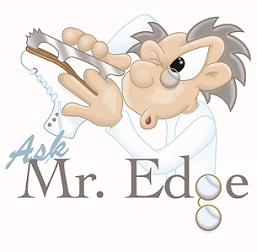By John Harmata
 In figure skating, there are certification and training programs at just about every level of the sport. Coaches belonging to national and internationally recognized coaching organizations have ongoing training and certification programs. Figure-skating judges must complete several hours of training and pass an exam for each level before they are allowed to judge a competition. Skaters have required exams in every discipline and level that they must pass before moving on to the next. Trainers and physicians must complete extensive college courses and internships and pass their required exams. Accordingly, one has to wonder why there have never been any industry standards developed for skate technicians: those who fit boots, and mount and sharpen blades.
In figure skating, there are certification and training programs at just about every level of the sport. Coaches belonging to national and internationally recognized coaching organizations have ongoing training and certification programs. Figure-skating judges must complete several hours of training and pass an exam for each level before they are allowed to judge a competition. Skaters have required exams in every discipline and level that they must pass before moving on to the next. Trainers and physicians must complete extensive college courses and internships and pass their required exams. Accordingly, one has to wonder why there have never been any industry standards developed for skate technicians: those who fit boots, and mount and sharpen blades.
Why So Many Injuries
Injuries are common in every sport; figure skating is no different. In the following weeks, I will address injuries in further detail, but for now, let us agree that the equipment used in figure skating—i.e., skates—is the single most important item essential to every skater’s success.
So why is there no formal schooling or standardized certification program for skate technicians?
Ice skates fall into the sporting-goods category of consumer retail products and, unlike the auto industry, for example, no regulations whatsoever are required. Prior to 1980, it was very common to find figure and hockey skates at local hardware stores. As the sport increased in popularity, skate technology rapidly increased also, driving the sale of both figure and hockey skates into ice rink pro shops.
Unfortunately for figure skaters, hockey was the sport at the time, and very little attention was given to understanding the importance of properly fitting, mounting, and sharpening figure skates. This lack of attention eventually lead to the creation of an underground cottage industry for figure skaters: a home-based business made up of coaches, parents of skaters, or skaters themselves, who began servicing the competitive figure skating market. This was often done based on minimal knowledge combined with personal experience/opinion and the philosophy
that what “works best for me” must be best for any skater.
As the number of participants in figure skating grew, so did the number of rinks around the world, increasing the number of untrained individuals trying to service figure skaters. As the call for higher jumps in programs steadily increased, so did injuries. Boots were no longer supportive enough and quickly broke down; requiring boot manufactures to increase the amount of support in their boots, sometimes making them too stiff for skaters.
At that time, sports medicine was in its infancy, and very few medical professionals were aware of the roles of biomechanics and alignment in relation to injuries. Therefore, causes of injury were not addressed. The individuals who fitted boots also were unaware of the problems resulting from a poor fit and the incorrect amount of support and currently are still selling overly supportive, improperly fitted boots. Added to this are two other potential causes of injury: unsatisfactory boot preparation and blade-mounting procedures.
What the Future Holds
Perhaps one day there will be a program available to better educate and certify those who work with ice skaters so they too can: Change the Way the World Skates, One Skater at a Time!
– Guest author, John Harmata, askmredge.com
